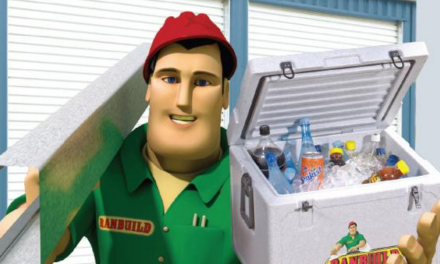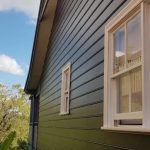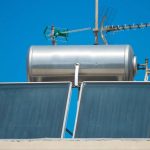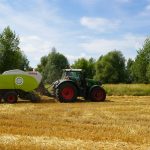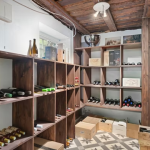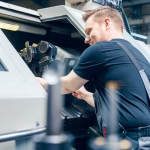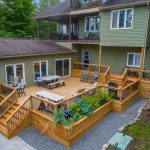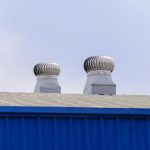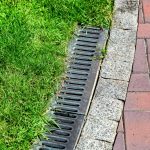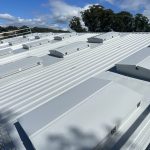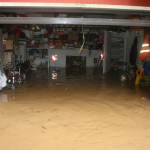Whirlybird Roof Vents: Do They Work for Sheds, Garages and Workshops?

If your shed or garage turns into an oven on sunny days or feels damp after rain, the culprit is usually poor ventilation. Whirlybird roof vents (also called turbine vents) are a simple, low-energy way to move hot, stale air out of the roof space so cooler air can be drawn in. For Aussie sheds and backyard workshops – often built from metal and copping full sun – this small upgrade can make a surprisingly big difference to temperature, condensation, and overall comfort.
What Is a Whirlybird (Turbine Vent)?
A whirlybird is a rotating roof vent with angled vanes. When wind hits the head, or when warm air inside rises, the turbine spins – creating a gentle suction that extracts hot, humid air from the roof cavity. Because it’s wind and buoyancy-driven, there’s no wiring, no running costs, and almost no maintenance beyond the occasional clean.
Why Ventilation Matters in Sheds
- Heat build-up: Metal cladding and low-insulated roofs can trap heat, pushing internal temps well above ambient.
- Condensation: Cool nights after hot days can cause moisture to collect under roof sheets – rust, mould and warped timber soon follow.
- Fumes & dust: Workshop activities (painting, fuels, welding) need airflow to clear smells and fine particles.
- Storage longevity: Tools, boxes and stored goods last longer in a dry, ventilated space.
Benefits of Whirlybirds on Sheds & Garages
- Lower internal temperatures: Exhausting hot air from the top helps reduce heat soak and improves comfort.
- Condensation control: Moving moist air out reduces the risk of corrosion, mould and mildew.
- No power required: Mechanical, not electrical – ideal for remote or off-grid sheds.
- Quiet, low-profile: Quality units run smoothly and don’t dominate the roofline.
Any Downsides?
- Wind dependent: Performance improves with breeze, roof temperature and correct placement.
- Quality matters: Cheap units can rattle, seize or leak if poorly installed – buy once, install right.
- Not a silver bullet: For very hot, insulated, or lined sheds, pair with eave/soffit vents or a powered fan for best results.
How Many Whirlybirds Do You Need?
As a rule of thumb, start with one whirlybird for a single garage or small shed (up to ~20–25 m²), and two or more for larger double garages or long sheds. Spacing them apart improves cross-extraction. If your shed has internal walls or a mezzanine, treat each area like a separate zone.
Placement & Supporting Intake Vents
- High on the roof: Mount near the ridge to capture the hottest air.
- Across the span: For multiple units, stagger them to cover the full roof area.
- Provide intake air: Vents need make-up air. Add eave/soffit vents, gable louvres, or door grilles so fresh air can enter low while hot air exits high.
Metal vs. Polycarbonate Heads
- Metal (Colorbond®/aluminium): Durable, UV-hardy, colour-matched to common shed roofs; good all-rounder.
- Polycarbonate: Lightweight and corrosion-proof; ensure it’s UV-stabilised and rated for local conditions.
Noise, Leaks & Durability: What to Expect
- Noise: A correctly installed, balanced unit is very quiet. Rattles usually mean loose fasteners or a cheap bearing.
- Water tightness: Proper flashing, compatible sealants and correct roof pitch selection prevent leaks.
- Longevity: Look for sealed bearings, stainless fasteners and a solid warranty.
DIY or Get a Pro?
Handy owners can DIY on simple, accessible roofs. You’ll be cutting a circular hole, installing a matching flashing (suitable for your roof profile), sealing, and fixing the turbine head. Always use the right screws for metal roofing, work to manufacturer clearances, and kit up with safety gear for heights. If the roof is steep, fragile, or tall, or you’re unsure about flashing, get a licensed installer to avoid leaks and voided warranties. RoofXPro, a roofing company in Sydney says “Good shed roof ventilation is about balance – exhaust at the top and clean intake down low. Get that right, choose a quality turbine, and most shed heat and condensation problems vanish.”
Whirlybirds vs Powered Roof Fans
- Whirlybirds: No power, minimal maintenance, continuous when wind/stack effect is present.
- Powered fans: Strong airflow on demand (great for lined/insulated spaces), but need wiring and add running costs.
- Hybrid approach: In hot inland areas or for heavy workshop use, consider a whirlybird plus a thermostatic fan for peak days.
Common Installation Mistakes
- Not providing intake vents, which strangles airflow.
- Fitting the wrong flashing for the roof profile or pitch.
- Using incompatible sealants that degrade on metal roofing.
- Placing the vent too low on the slope, missing the hottest air near the ridge.
Maintenance Tips
- Give the head a spin test twice a year; it should rotate freely and silently.
- Tighten fixings and re-seal if needed after storms or heatwaves.
- Clear debris from around the flashing and check for nesting pests.
Quick Buying Checklist
- Compatible base/flashing for your roof profile and pitch.
- Sealed bearings and stainless/galv fasteners.
- UV-stable finish (for sun-exposed sheds).
- Local wind rating and a written warranty.
Cost Guide (Indicative)
- DIY supply: Typically affordable per unit, depending on brand and materials.
- Installed: Add labour, safe roof access and any extra intake vents required.
Bottom Line: Are Whirlybirds Worth It for Sheds?
For most unlined or lightly insulated sheds and garages, a well-placed whirlybird (or two) offers a solid, low-maintenance boost to airflow, helping reduce heat, odours and condensation. Combine it with intake vents and basic insulation for the best bang-for-buck improvement.
Whether you’re protecting tools, keeping a hobby space comfortable, or safeguarding stored gear, smart ventilation is essential. On ShedBlog we’re all about practical shed upgrades that work in real Aussie conditions, whirlybird roof vents tick that box. If you’re planning a roof refresh, adding insulation, or upgrading flashings at the same time, consider professional advice to get placement and flashing spot-on.




